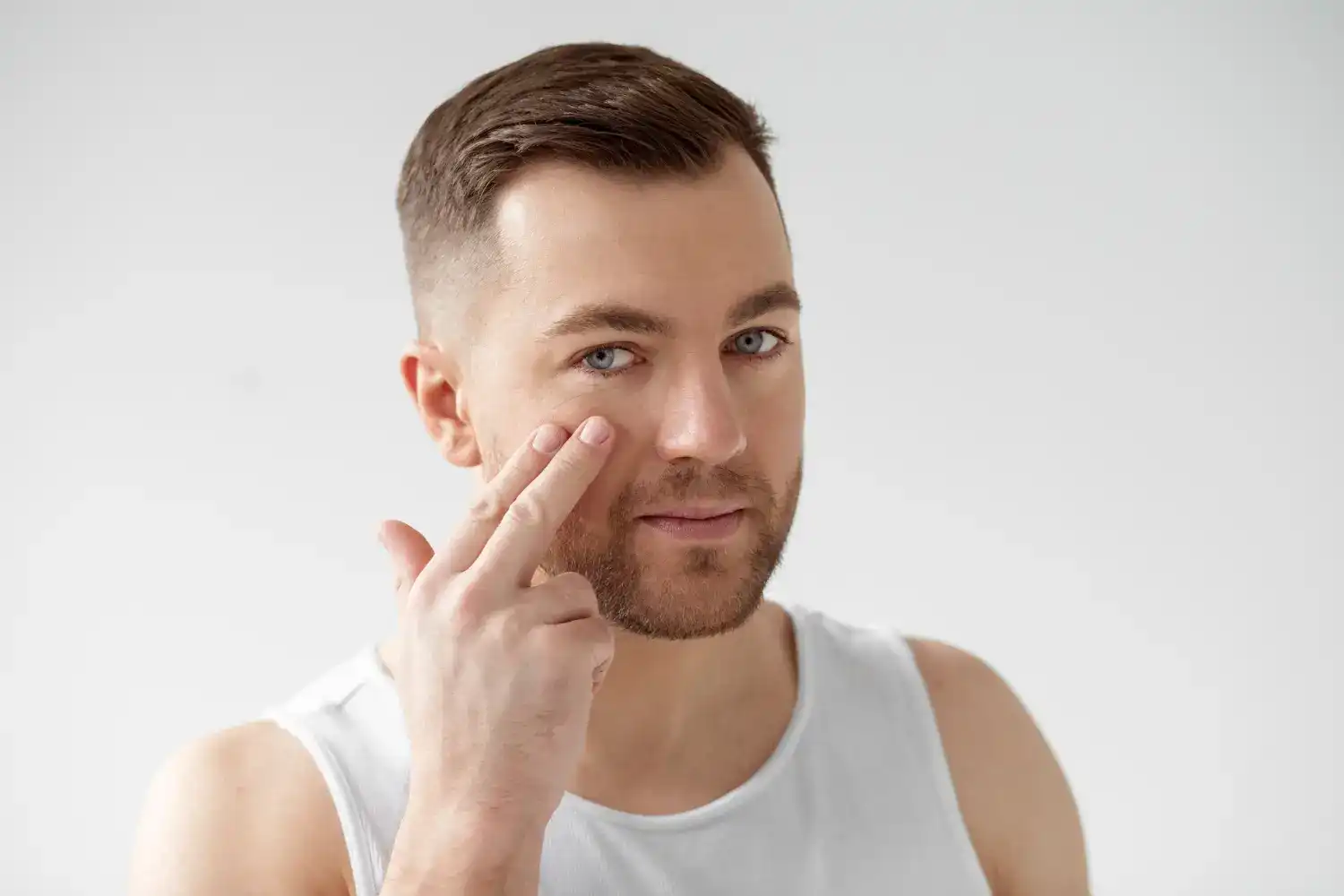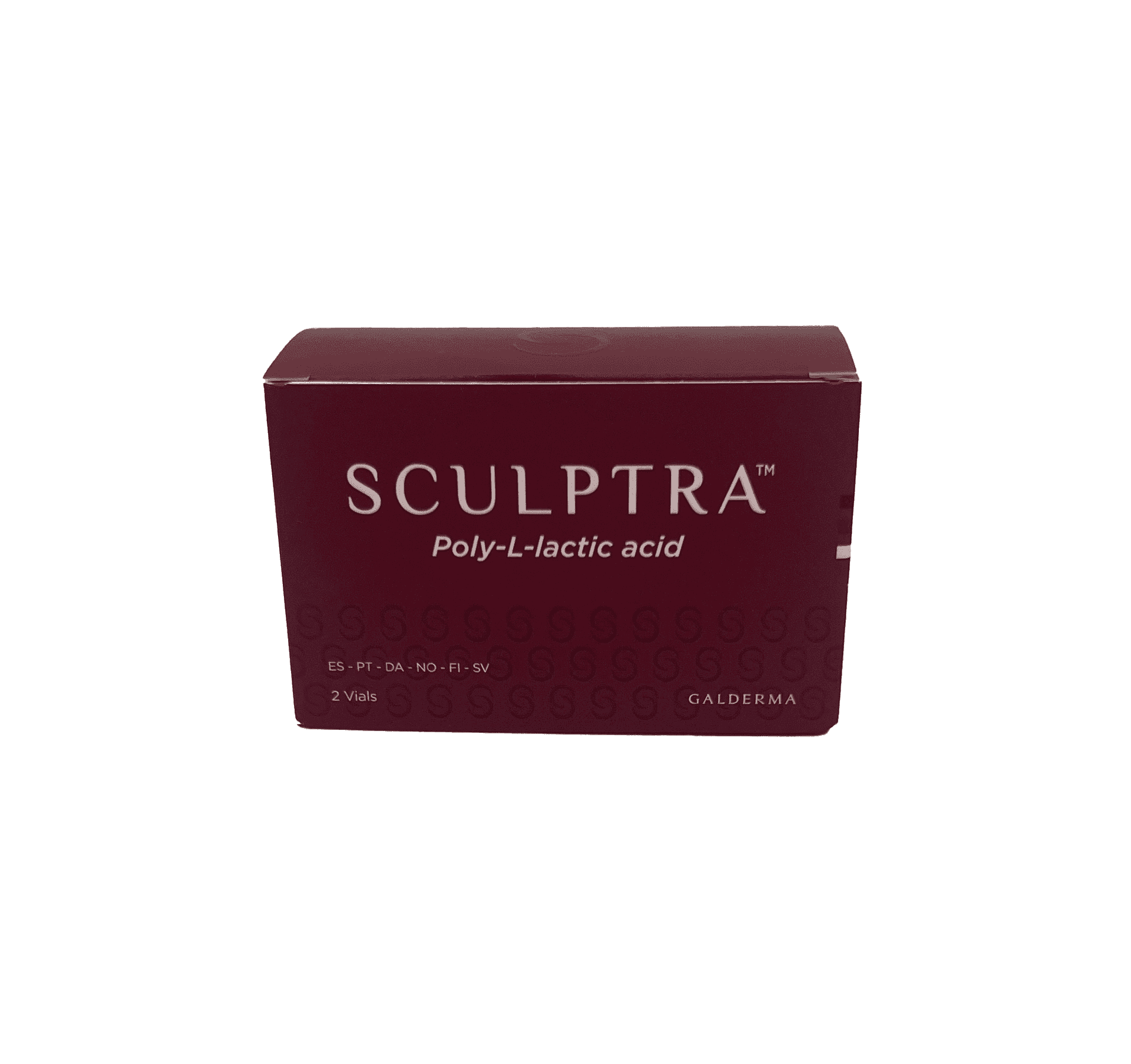Business Hours: Monday - Friday: 9 AM - 6 PM EST

Sculptra vs Botox – How Do These Products Compare?
David Fuller
Last Updated On: August 19, 2024
Did you know that dermal fillers and botulinum toxins are among the most popular non-surgical treatments for facial aging? Both options offer unique benefits for facial rejuvenation, effectively reducing wrinkles and restoring a youthful appearance. However, their mechanisms and results differ significantly.
Sculptra and Botox are frequently compared in this context, as they address aging concerns through distinct methods. Sculptra is a dermal filler that stimulates collagen production to gradually restore volume and improve skin texture. In contrast, Botox temporarily relaxes facial muscles to reduce the appearance of dynamic wrinkles.
This article will explore the key differences between Sculptra and Botox, including their benefits, side effects, and ideal uses.
Key Takeaways
- Sculptra and Botox are popular cosmetic treatments with different compositions and mechanisms of action.
- Sculptra stimulates collagen production with poly-L-lactic acid, addressing volume loss and skin laxity.
- Botox temporarily paralyzes muscles to reduce the appearance of fine lines and wrinkles.
- Clinical efficacy, safety profiles, treatment protocols, and patient satisfaction differ between the two treatments.
- Choosing the right treatment involves consulting a qualified professional to determine a patient’s specific aesthetic concerns and treatment goals.
About: Operating since 2016, Med Supply Solutions is known for being one of the industry’s top and trusted suppliers of cosmetic and viscosupplementation products. Buy Sculptra at Med Supply Solutions today and stock your practice at wholesale prices!

SCULPTRA® 2 vials
NON-PYROGENICMANNITOL
POLYLACTIC ACID
SODIUM CARBOXYMETHYLCELLULOSE
$549.00
Tier pricing
Save 1.82%
3 or more
$539.00 each
Save 2.73%
11 or more
$534.00 each
Save 3.64%
21 or more
$529.00 each
Understanding Sculptra and Botox
Sculptra and Botox offer distinct approaches to enhancing appearance. Sculptra utilizes poly-L-lactic acid to stimulate natural collagen production, gradually improving skin volume and texture. This treatment is particularly effective for areas like the face, neck, and buttocks, providing long-term, natural-looking results.

In contrast, Botox uses botulinum toxin type A to temporarily relax facial muscles, effectively reducing dynamic wrinkles such as forehead lines and crow’s feet. Botox delivers immediate smoothing effects but requires more frequent touch-ups compared to Sculptra’s longer-lasting benefits.
Choosing between Sculptra and Botox depends on your goals—whether you seek gradual volume restoration or quick wrinkle reduction. Both treatments cater to different needs and can be selected based on individual preferences and desired outcomes.
Clinical Efficacy and Safety Profiles
Understanding the efficacy of Sculptra and Botox in addressing specific aesthetic concerns is crucial for medical professionals in creating patient treatment plans.

Image courtesy of Timeless Beauty Aesthetics
Sculptra effectively reduces deep wrinkles by stimulating collagen production. A double-blind, randomized trial comparing Sculptra with another filler demonstrated its efficacy in correcting nasolabial fold depression. Sculptra’s results can last over two years, making it a durable option for facial rejuvenation. However, long-term safety data require further investigation.

Image courtesy of My Vanity Aesthetics
Botox temporarily weakens muscles by blocking nerves. It’s widely used for wrinkle reduction and treating conditions like migraines. Studies confirm its high effectiveness for glabellar forehead lines. Botox provides quick but temporary results, making it suitable for those seeking immediate improvements.
Treatment Protocols and Patient Satisfaction
Doctors suggest a specific number of treatments for the best results. People are generally happy with their new looks and how long they last. Sculptra and Botox have gained recognition as ideal solutions for varied cosmetic needs. Each procedure maintains a unique protocol modified to yield the best outcomes.

- Sculptra’s Treatment Protocols: The recommended treatment protocol typically involves a series of injections over several months. Patients usually receive three to four sessions, spaced about four to six weeks apart. This gradual approach allows the body to produce new collagen, producing natural-looking results that improve over time.
- Botox’s Treatment Protocols: The standard treatment protocol involves injections every three to four months, depending on the patient’s response and the area being treated. Botox is often used for dynamic wrinkles, such as crow’s feet, forehead lines, and frown lines between the eyebrows.
Patient Satisfaction and Long-Term Results
- Sculptra: Patients generally report high satisfaction with Sculptra due to its long-lasting and natural results. The effects can last up to two years or more, as collagen production improves skin texture and volume. However, because the results develop gradually, patients must wait and understand that the full benefits will be seen over several months.
- Botox: Botox is well-regarded for its quick results and minimal downtime. Patients often see improvements within a few days, with the full effect visible within two weeks. While the results are temporary, requiring maintenance treatments every few months, many patients appreciate the immediate reduction in wrinkles and the overall smoother appearance.
Choosing the Right Treatment for You
Choosing the right treatment between Sculptra and Botox requires deeply understanding their differences and how each aligns with patient needs. Here are some critical factors every medical professional should consider:
- Patient’s Aesthetic Goal: Botox smooths fine lines around the forehead and eyes, while Sculptra addresses deeper volume loss, such as enhancing cheekbones or softening jowls.
- Duration of Results: Botox lasts 3-6 months, whereas Sculptra can provide results for up to two years after multiple treatments.
- Onset of Effects: Botox shows results within days, peaking in about two weeks. Sculptra’s effects develop gradually over several months.
- Patient’s Age and Skin Condition: Younger patients may benefit from Botox, while older patients with more volume loss might see better results with Sculptra.
- Treatment Process and Frequency: Botox requires frequent, quick sessions, while Sculptra needs initial treatments over weeks or months, with occasional touch-ups.
- Side Effects Profile: Botox may cause bruising or temporary drooping, while Sculptra’s side effects may include lumps if not massaged properly.
- Cost Considerations: Botox may have a lower session cost, but Sculptra’s longer-lasting results may balance or justify its higher price.
- Patient History and Allergies: Check for any past reactions to injectables to avoid adverse effects with either treatment.
Consultation and Decision-Making Process
Choosing the right treatment between Sculptra and Botox depends on a detailed consultation and decision-making process. This step is vital for ensuring patient satisfaction and optimal results.
- Assess Medical History: Review past cosmetic treatments, allergies, and current medications to ensure safety.
- Discuss Aesthetic Goals: Understand patient expectations for wrinkle reduction with Botox or volume restoration with Sculptra.
- Examine Concern Areas: Determine whether Botox or Sculptra is more suitable based on specific treatment areas.
- Review Before-and-After Photos: Show similar cases to help patients visualize potential results.
- Explain Product Differences: Outline how Sculptra and Botox work, their duration, and what concerns they address.
- Discuss Pros and Cons: Consider each treatment’s recovery time, side effects, and costs.
- Session Requirements: Explain the number of Sculptra sessions versus Botox frequency for maintaining results.
- Clarify Post-Treatment Care: Provide instructions to optimize results.
- Overview of Safety Profiles: Highlight potential side effects based on clinical studies.
- Formulate a Treatment Plan: Create a plan that fits the patient’s goals, budget, and lifestyle.
Conclusion
Sculptra and Botox address aging differently: Sculptra boosts collagen for long-term results, while Botox smooths lines quickly by relaxing muscles. Each has unique benefits and side effects. Choose based on your needs and goals, and consult a professional to ensure the best outcome.
FAQs
1. What is the difference between Sculptra and Botox?
Sculptra builds facial volume through collagen stimulation, while Botox smooths wrinkles by relaxing muscles. Each treatment has distinct applications and benefits.
2. What are the pros and cons of using Sculptra?
Sculptra offers long-term volume restoration but may require multiple sessions. Delayed results and potential side effects, like lumps, are possible drawbacks.
3. Is one better than the other—Sculptra or Botox?
Sculptra is ideal for long-term volume enhancement, while Botox is better for immediate wrinkle reduction. Your choice depends on your goals and skin condition.
4. How should I choose between Sculptra and Botox for my treatment?
Choose Sculptra for long-term volume and collagen stimulation and Botox for quick wrinkle reduction. Consult a professional to match the treatment to your specific goals.
References
What’s the Difference Between Botox and Facial Fillers? Cleveland Clinic. Published August 31, 2023. Accessed August 7, 2024. https://health.clevelandclinic.org/whats-the-difference-between-facial-fillers-and-botox
Dermal Filler Do’s and Don’ts for Wrinkles, Lips and More. FDA. Published online February 4, 2022. https://www.fda.gov/consumers/consumer-updates/dermal-filler-dos-and-donts-wrinkles-lips-and-more
Products
Cart
Log In
Newsletter
Subscribe for exclusive offers and updates on new arrivals
Share feedback at:
Working Hours
Monday to Friday: 9 AM to 6 PM EST
The Most Popular Brands
Med Supply Solutions
Support
Copyright 2025. Med Supply Solutions